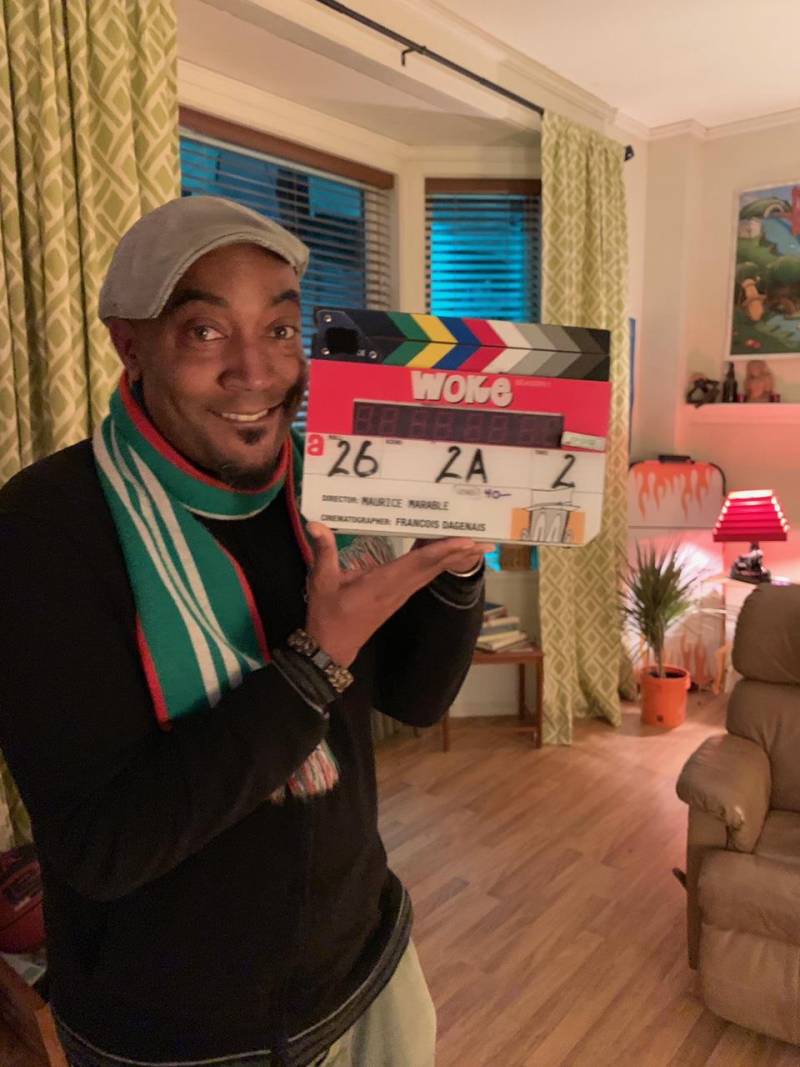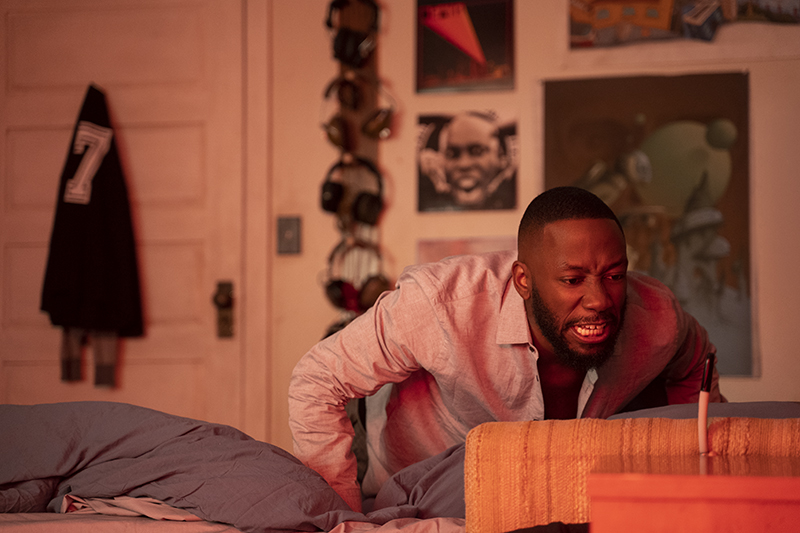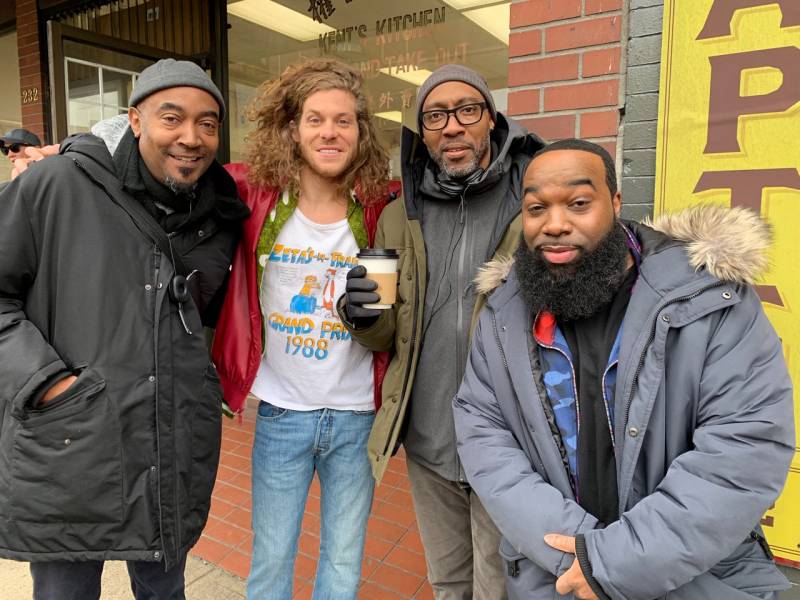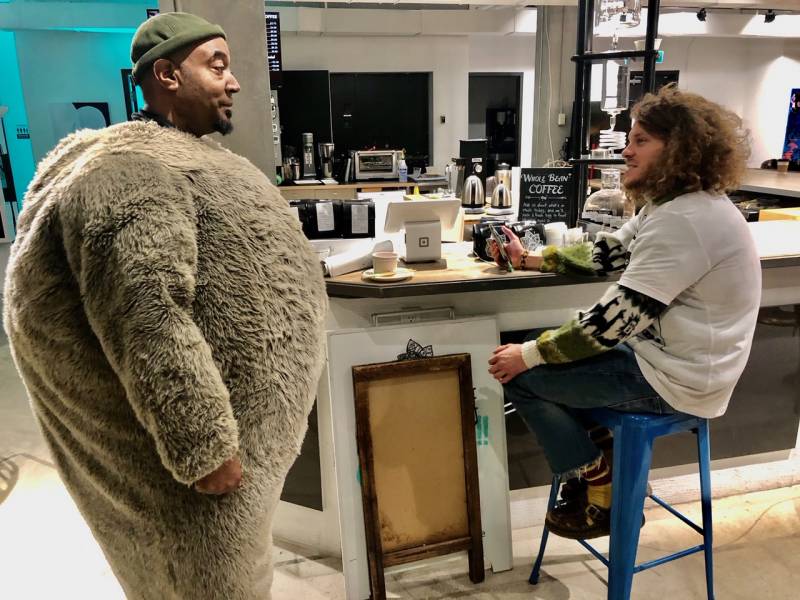Keith Knight’s path to success hasn’t just been a road less traveled, his was a road designed by M. C. Escher, full of inconceivable twists and turns, trolls under bridges, Sphinx riddles and flaming hoops. I can count the number of American indie cartoonists who have had their work turned into a live action television series on one hand. And I can count the number of Black American indie cartoonists who have had their work turned into a live action television series on one finger.
Premiering on Hulu Sept. 9, Woke is an eight-episode comedy series loosely based on The K Chronicles, Knight’s long-running and politically charged autobiographical comic strip. The show follows Keef Knight, a “don’t make waves” apolitical San Francisco cartoonist who is on the verge of commercial success with his family-friendly comic strip. But when he suffers a traumatic event involving the SFPD, it “opens his third eye,” causing a spiritual and political awakening (as well as a public meltdown), that forces him to take his life in a new direction.
If you were part of the underground art scene in San Francisco in the 1990s or 2000s, you may have encountered Knight around town, hanging flyers for his hip hop/garage band The Marginal Prophets or in a coffee shop drawing a new installment of his daily strip. He originally intended to move to San Francisco for just five years before heading to L.A. to seek his fortune. But, Knight tells me, once he arrived in the Bay Area, “San Francisco was so cool and so special, I stayed for 17 years.”
To be an artist in San Francisco in those years was to be part of a symbiotic organism; opportunities to share his work were plentiful. He could walk into Comic Relief on Haight Street and sell his zine before wandering down to the Mission to set up a show at the Chameleon. Around every corner lurked promises of a wild warehouse party or an illicit house show.
“I felt like it was like my graduate school,” Knight remembers. “This was when I discovered underground cartooning and realized you didn’t have to have that format of a daily cartoon. You could have a longer series of panels like Matt Groening’s Life In Hell and you could talk about politics and drugs and sex. I loved it.”

Even though he fell hard for his adopted home, he never lost sight of his original vision of adapting his comics for the big screen. Eventually, he realized he’d stayed too long at the fair. “I was in a rent-controlled apartment, and I was sitting there going, ‘Do I want to be here 20 years from now just because my rent is so cheap?’ I just don’t want to be that guy going, ‘This place used to be so cool before this and that happened.’ So I got out while the getting was good.”
In 2007, he pulled up stakes and made his way to L.A. to seek out a development deal. His gregarious nature and habit of working in cafes soon led to meeting a host of producers and other collaborators who believed in his vision. And though his networking skills were key, it didn’t hurt that he also had a massive collection of ideas and stories prepared as a result of drawing a daily strip for decades.
He even turned his enormous 500-page comics anthology The Complete K Chronicles into a theatrical prop that he would lug with him to pitch meetings. “When the meeting was wrapping up,” he recounts, “I would pull that book out, chuck it up the air and have it slam in the middle of the table—this thing was like the size of a phone book—I’d slam it down and then as I was walking out I would say, ‘There’s your first 10 seasons.’” Hulu executive Rob Gati later told him he would always remember that move. It sold the show.

The producers took some risks with Woke—one of which is using a mix of live action and animation. When I first heard about this aesthetic decision I felt a sinking feeling of dread. With few exceptions, this particular hybrid has a bad track record of being corny, see Out of Jimmy’s Head (never heard of it? There’s a reason for that) or the recent Chris Meloni alcoholic cop series Happy!
But Woke escapes this cursed legacy by using animation as a storytelling tool rather than a novelty. When inanimate objects begin speaking to Keef, the special and practical effects are crafted to make them look like they’re an organic extension of this world. The magical realism is used sparingly; it enhances the disorienting experience of his political awakening rather than creating a narrative stumbling block. “We didn’t want it to be a buddy show with Keef and his marker hanging out,” Knight explains. “We wanted the animation to manifest itself when you least expected it. I wanted it to be like The Sixth Sense when you didn’t know where the next ghost was coming from.”




